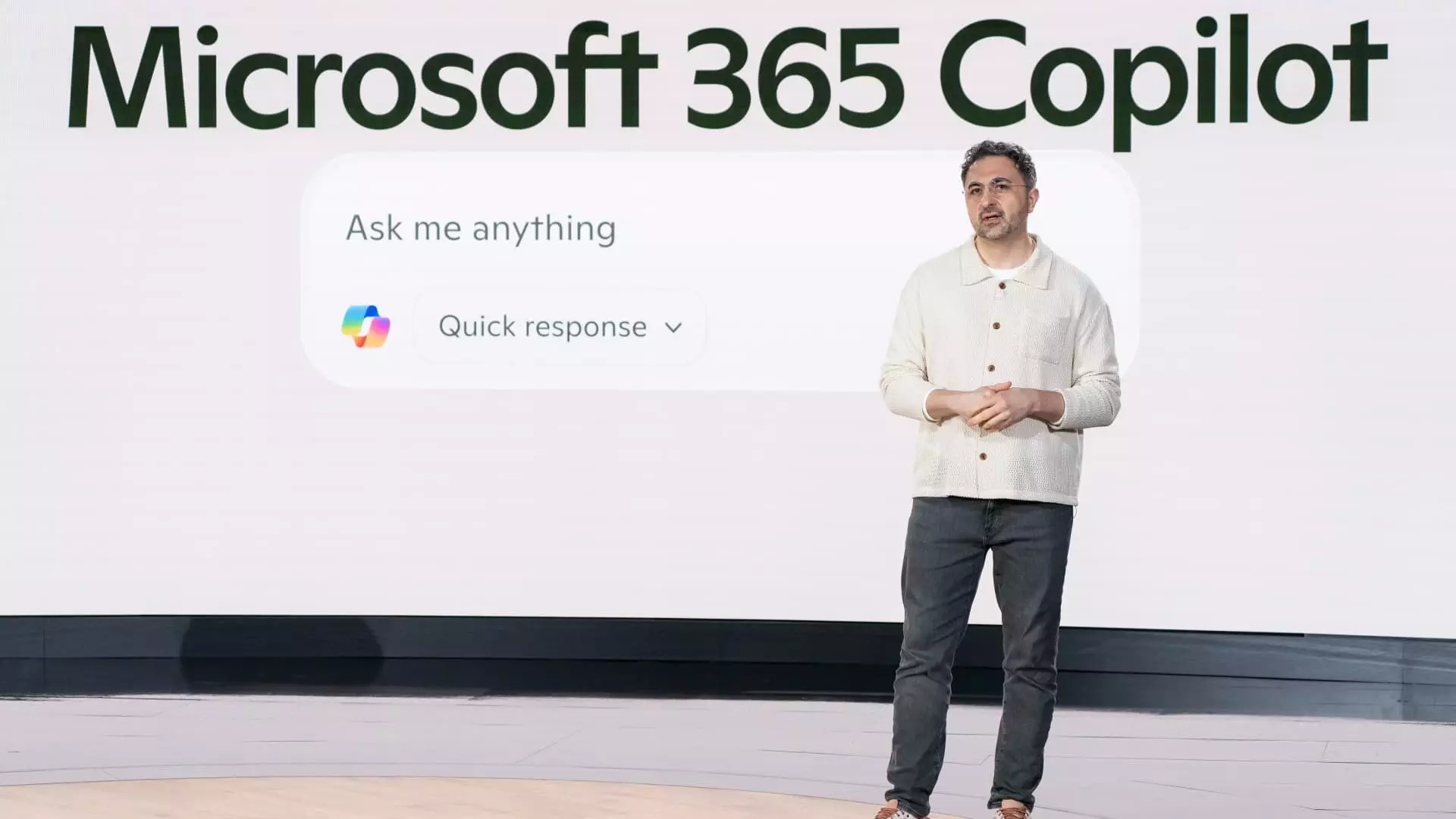In the fast-paced world of artificial intelligence, immediate results often overshadow thoughtful strategy. Microsoft, under the leadership of AI Chief Mustafa Suleyman, has made a provocative choice: to lag behind the cutting edge of AI development intentionally. Suleyman argues convincingly that waiting several months to develop AI models that are “three or six months behind” can yield substantial benefits. This waiting game allows Microsoft to optimize resources, minimize costs, and focus on specific, practical use cases that cater to real business needs. The very fact that Microsoft chooses to adopt an “off-frontier” strategy raises questions about the obsession many tech leaders have with being first—an obsession that often leads to high costs and unrefined products.
This strategic approach reflects an understanding that sometimes the best innovations are those that have had time to mature. By avoiding the initial rush to market, Microsoft can deliver more refined solutions, less burdened by the growing pains typical of new technologies. The company’s focus on capital-intensive models acknowledges that in the world of AI, patience is not merely a virtue but a strategic asset.
Relationships Over Rivals: The OpenAI Connection
Microsoft’s innovative strategies have also been shaped by the collaborations it fosters. The partnership with OpenAI, a relationship built on mutual advantage, exemplifies how collaborating can lead to more robust outcomes than fierce competition. Microsoft has committed a staggering $13.75 billion to OpenAI, cementing their ties as they work collectively to harness generative AI’s immense potential.
However, Microsoft’s heavy investment doesn’t mean complacency. With OpenAI beginning to resurface as a competitor by exploring partnerships with companies like Oracle, Suleyman underscores the importance of self-reliance. He states a vital long-term strategy: Microsoft must ultimately be able to perform AI functions independently. As the digital landscape shifts, Microsoft’s readiness to evolve its partnerships reflects a prudent balance of reliance and self-sufficiency.
A Different Kind of AI Evolution: Mind Over Matter
Suleyman’s vision is a paradigm shift in how companies approach AI development. While many tech giants are pouring resources into creating the most powerful models—often at unsustainable levels—Microsoft is choosing a more cerebral course. By focusing on a less-is-more philosophy, they are leveraging existing technologies in service of real-world applications. This insight is crucial as AI moves from theoretical frameworks into operational tools.
One pivotal enhancement Suleyman mentioned is the integration of memory into Microsoft’s Copilot assistant. This permits the assistant to retain vital information about its users, thereby enhancing its utility in daily tasks. Rather than chasing the next big thing, Microsoft is honing its applications, creating a more tailored user experience—a critical factor in maintaining user loyalty and satisfaction.
Open-Source Initiatives: Bridging Accessibility with Innovation
To further enhance their positioning in the AI discourse, Microsoft has also invested in open-source models capable of operating on standard PCs. This move enables a broader swath of users to participate in the AI revolution, effectively democratizing access to these advanced technologies. Contrast this with larger models requiring substantial computing power which lock out smaller developers and users. Here, Microsoft isn’t just playing the game; they’re reshaping how the game is played.
This commitment to accessibility aligns perfectly with a broader vision of technological advancement that serves the many, not just the privileged few. As we have seen in the tech community, fostering inclusivity can stimulate collective innovation, leading to a richer array of use-cases and applications.
The Future of AI: Controlled Ambition Ahead
Microsoft’s less aggressive approach to AI development may seem counterproductive at first glance, but it embodies a calculated ambition. By opting not to prioritize the most advanced models, the company is actually asserting its belief in the importance of quality over ostentatious performance. There’s a clear understanding that true innovation emerges from within, and Suleyman’s focus on building robust internal capabilities, as well as cultivating fruitful partnerships, emphasizes this mindset.
As we navigate through an era defined by technological transformation, Microsoft stands as a testament to an alternative path in the race for AI supremacy. Their journey under Suleyman has shown us that being methodical can lead to sustainable success, even in a landscape where the mantra is often “faster, bigger, better.” In this unfolding reality, Microsoft is asserting itself not merely as a player but as a pioneer shaping the future trajectory of AI implementation and accessibility.

